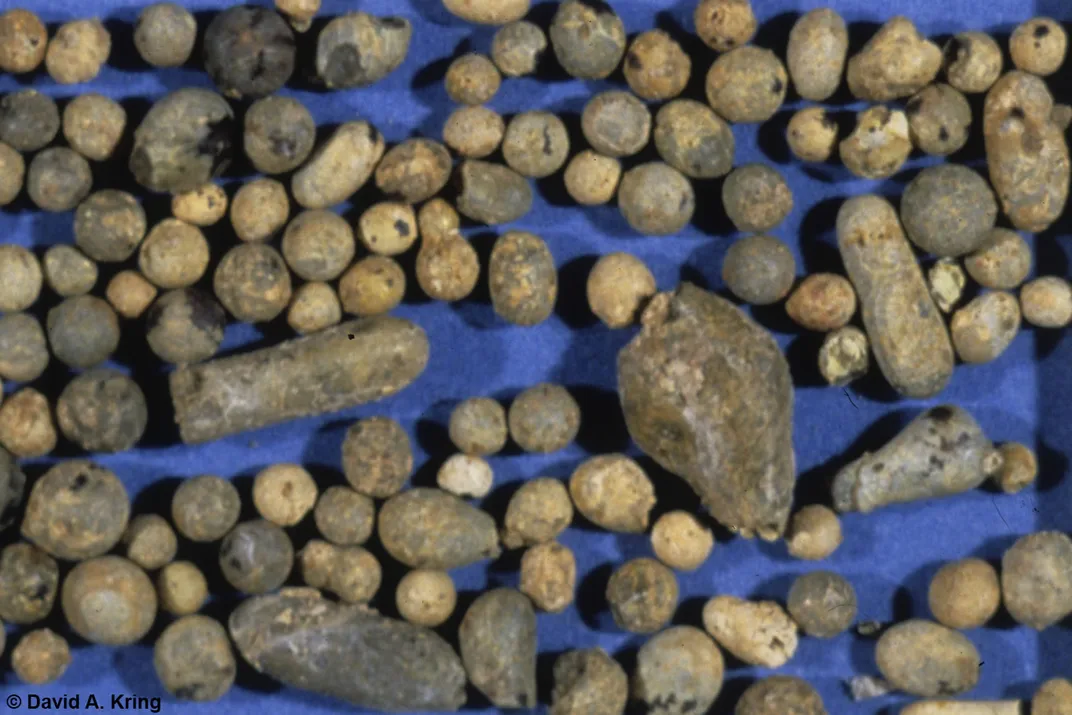What Happened in the Seconds, Hours, Weeks After the Dino-Killing Asteroid Hit Earth?
The Cretaceous forecast: Tsunamis, a deadly heat pulse, and massive cooling.
/https://tf-cmsv2-smithsonianmag-media.s3.amazonaws.com/filer/ec/40/ec408f4b-cd71-4d42-a399-56afc88dc185/istock_000045898948_large.jpg)
No one could have seen the catastrophe coming. Dinosaurs stalked each other and munched on lush greens as they had for over 170 million years. Pterosaurs soared in the air, mosasaurs splashed in the seas, and tiny mammals scurried through the forest on what was just another day in the Late Cretaceous.
Then the world changed in an instant. A chunk of extraterrestrial rock over 6 miles wide slammed into what would eventually become known as Mexico’s Yucatan Peninsula. The shock was a planet-scale version of a gunshot. Earth would never be the same again.
But what actually happened on the day the asteroid struck? By sifting through the rock record, experts are putting together a nightmarish vision of one of the worst days in the history of our planet.
Some of the damage is easy to assess. The crater created by the impact is over 110 miles in diameter, a massive scar half covered by the Gulf of Mexico. But the devil is in the geological details at places around the world, such as signs of a massive tsunami around the Gulf coast. The impact struck with so much force and displaced so much water that within 10 hours an immense wave tore its way along to the coast.
What settled out is a geologic mess: ocean sand on what would have been dry land, and fossils of land plants in areas that should have been the ocean, in a mixed up slurry of ancient sediment. In the part of the world where the tsunami struck, these layers mark a violent boundary between the last day of the Cretaceous and the first of the following period, the Paleocene.
Not that the effects were limited to the area of impact. The blast was enough to cause geologic disturbances, such as earthquakes and landslides, as far away as Argentina—which in turn created their own tsunamis.
As dangerous as the waves were to life in the western hemisphere, however, the heat was worse.
When the asteroid plowed into the Earth, tiny particles of rock and other debris were shot high into the air. Geologists have found these bits, called spherules, in a 1/10-inch-thick layer all around the world.
“The kinetic energy carried by these spherules is colossal, about 20 million megatons total or about the energy of a one megaton hydrogen bomb at six kilometer intervals around the planet,” says University of Colorado geologist Doug Robertson. All of that energy was converted to heat as those spherules started to descend through the atmosphere 40 miles up, about 40 minutes after impact. As Robertson and colleagues wrote in a paper titled “Survival in the First Hours of the Cenozoic”: “For several hours following the Chicxulub impact, the entire Earth was bathed with intense infrared radiation from ballistically reentering ejecta.”
Earth became a world on fire. The friction of falling made each spherule an incandescent torch that quickly and dramatically heated the atmosphere. Any creature not underground or not underwater—that is, most dinosaurs and many other terrestrial organisms—could not have escaped it. Animals caught out in the open may have died directly from several sustained hours of intense heat, and the unrelenting blast was enough in some places to ignite dried-out vegetation that set wildfires raging.
On land, at least, much of Cretaceous life may have been wiped out in a matter of hours. The heat pulse and its after-effects alone severely winnowed back life’s diversity. But the situation turned out to be even more dire.

“The climate impact was enormous,” Robertson says. “Dust and soot from the impact and fires would have created an ‘impact winter’ with zero sunlight reaching the surface of the Earth for a year or so.” Geologists can see this directly as a thin layer of soot that coincides with the layer between the Cretaceous and the following period—called the K/Pg boundary—all around the world.
Organisms that had somehow managed to survive the intense heat and fires now faced a new threat. “Loss of sunlight would have eliminated the phytoplankton base of almost all aquatic food chains and caused complete collapse of aquatic ecosystems,” Robertson says, and terrestrial plants were likewise denied precious sunlight for photosynthesis. All told, what evolution took over 180 million years to build up could have been cut back in less than the lifetime of an individual Tyrannosaurus rex. Death came quickly at the end of the Cretaceous.
Taking a census of the damage is difficult, partially, Robertson says, because dinosaurs get a disproportionate amount of attention. Pollen and plankton, Robertson points out, actually provide a more refined picture of what happened in the wake of the impact. Nevertheless, the available fossil record shows that about 75 percent of known species completely disappeared, and things probably weren’t rosy for the survivors. “It’s is reasonable to suppose that the 25 percent of surviving species had near-total mortality,” Robertson says, but these fortunate organisms were the ones that would go on to set the stage for the next 66 million years of evolutionary history.
Scientists will continue to pore over the details. Who could resist one of the greatest murder mysteries of all time? But there’s something else that keeps pulling our attention to that terrible, horrible, no good, very bad day 66 million years ago. We celebrate dinosaurs for their longstanding dominance of the planet, taking them up as totems of success. But if they could be so quickly and irrevocably destroyed, then we could also suffer the same fate. By looking at the ancient record of worldwide death, we face the mortality of our species and the question of what our long term survival might demand of us.
/https://tf-cmsv2-smithsonianmag-media.s3.amazonaws.com/accounts/headshot/RileyBlack.png)
/https://tf-cmsv2-smithsonianmag-media.s3.amazonaws.com/accounts/headshot/RileyBlack.png)